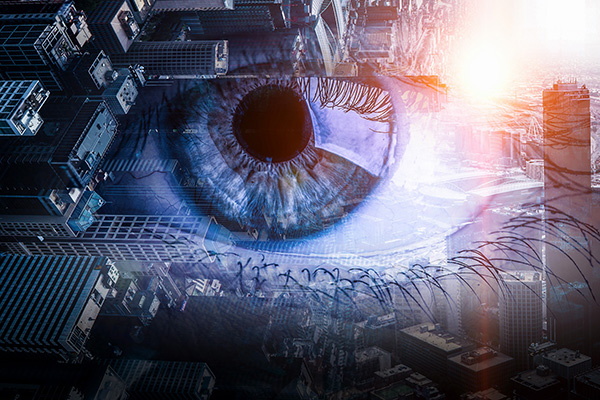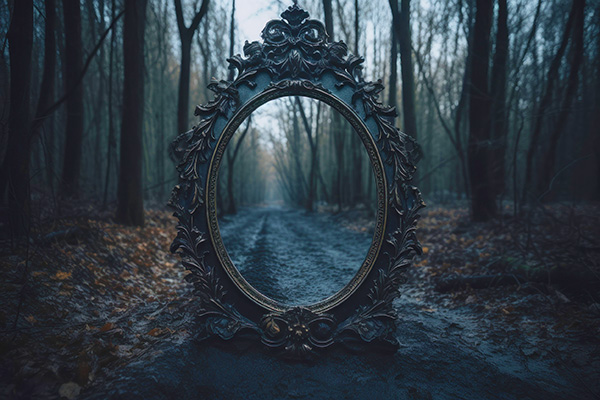psychic vision
The Psychic Technique Of Remote Viewing
 Recently, Brazilian psychic Chaline Grazik made waves when she predicted a plane crash during an Instagram live broadcast on August 8, 2024. Grazik urged her followers to start praying after she had a vision of a falling plane with many people on board. Sadly, the very next day, a tragic plane crash near São Paulo claimed the lives of 62 people.
Recently, Brazilian psychic Chaline Grazik made waves when she predicted a plane crash during an Instagram live broadcast on August 8, 2024. Grazik urged her followers to start praying after she had a vision of a falling plane with many people on board. Sadly, the very next day, a tragic plane crash near São Paulo claimed the lives of 62 people.
Psychic visionaries, or “seers,” have always piqued people’s curiosity. Known as clairvoyance, “psychic vision,” or “third eye seeing,” people with this psychic ability are able to see visual information about objects, people, places, or events in their mind’s eye without relying on the normal senses. It is a fascinating phenomenon that has woven its way through history and has had a significant influence on religion, metaphysics, spiritualism, and scientific research.
There are documented examples of psychic visions dating as far back as ancient times. One of the most famous is the Pythia or Oracle of Delphi in ancient Greece. She was known for her prophetic visions, including one given to King Croesus of Lydia in the 6th century BC. In a trance-induced vision, she foresaw him fatally cross a river. She then cryptically warned him, “If you cross the river, a great empire will be destroyed.” Croesus took this as a sign that he would triumph over Persia, but the prophetic vision ultimately meant the downfall of his own empire.
The Bible also has its share of references to psychic visions. For example, the prophet Isaiah described a vision of angelic beings surrounding God’s throne (Isaiah 6), while Peter had a vision of a sheet of animals descending from heaven (Acts 10), among many others.
The Missed Opportunities Of Prophetic Predictions
 Psychics and mediums are mostly known only for giving personalized predictions and spiritual advice tailored to individual clients. People often come to us for help with personal issues such as relationships, career choices, and other life concerns.
Psychics and mediums are mostly known only for giving personalized predictions and spiritual advice tailored to individual clients. People often come to us for help with personal issues such as relationships, career choices, and other life concerns.
But there’s a bigger picture that doesn’t get as much attention: the role of some highly gifted psychics in making large-scale predictions that address collective challenges or foresee major events that affect everyone. These larger prophecies, such as warnings of natural disasters, economic crises, or global conflicts, are often unrecognized, overlooked, and even ridiculed.
Large-scale prophecies can have a big impact on the greater good if they were to be taken more seriously. If documented and acted upon, they can help society prepare for significant events and improve overall well-being.
In our modern world, the value of prophetic insights from today’s psychics and mediums is more relevant than ever. While prophecy may seem outdated compared to modern science and technology, these predictions can help us navigate the uncertainties and complexities of the future.
At their core, prophetic predictions are warning messages from the spirit realm, universal consciousness, the divine. They’re not random or whimsical; they’re meant to guide humanity by giving us glimpses into possible future scenarios. These visions are also not meant to interfere with our free will, but to alert us to possible outcomes so that we can take proactive steps to prevent or mitigate any negative effects.
Seeing The Future In Precognitive Dreams
 Many people will tell you that they’ve had a precognitive dream at some point in their lives. In short, this is a dream that somehow revealed or predicted a future event or circumstance. Literature, myth, and history are filled with stories of such dreams, from ancient times to the sinking of the Titanic.
Many people will tell you that they’ve had a precognitive dream at some point in their lives. In short, this is a dream that somehow revealed or predicted a future event or circumstance. Literature, myth, and history are filled with stories of such dreams, from ancient times to the sinking of the Titanic.
The concept of precognitive dreams has fascinated mankind for centuries. In ancient cultures, dreams were seen as messages from the gods or the universe, guiding individuals through their waking lives.
The Bible, for example, contains numerous accounts of prophetic dreams, such as Joseph’s dreams that foretold his rise to power in Egypt. These stories underscore the long-held belief that dreams can provide glimpses into the future.
But how much truth is there in the idea of dreaming the future? Is it really a thing?
Throughout history, people have reported dreams that seemed to predict future events. These precognitive dreams, as they’re called, have included personal tragedies, world-shaping conflicts, and even scientific breakthroughs.
Carl Jung, a prominent Swiss psychiatrist and psychoanalyst, was interested in the phenomenon of precognition in dreams. He believed that dreams could sometimes contain elements of future events or insights that were not consciously available to the dreamer. Jung coined the term “synchronicity” to describe meaningful coincidences that defy conventional explanations of cause and effect, suggesting a deeper connection between the psyche and external events.
The Psychic Insights Of Remote Viewing
 In my own journey of intuitive development, I have been exploring the possibilities of Remote Viewing. It is a psychic skill that is not often talked about.
In my own journey of intuitive development, I have been exploring the possibilities of Remote Viewing. It is a psychic skill that is not often talked about.
Remote viewing is a clairvoyance technique that allows you to gather information about a distant or unseen target, such as a specific location, object, or event, using extrasensory perception (ESP) or “anomalous cognition.”
Remote viewers have minimal or no prior information about the target and rely solely on their capacity for “nonlocal awareness” (distant psychic sensing) to explore and describe it.
Remote Viewing gained popularity in the 1970s and 1980s, primarily through the efforts of the U.S. government-sponsored Stargate Project.
It is essentially the practice of clairvoyance using a formalized technique or protocol developed by the U.S. military during the Cold War as a tool for intelligence gathering. Over time, however, it has transcended its military origins and become a subject of interest to those seeking to tap into their latent psychic abilities.
Although a number of remote viewing studies have been conducted by individual researchers, most of the activity in this field to date has been conducted by three major laboratories: The Stanford Research Institute (SRI) in Palo Alto, California, the Princeton Engineering Anomalies Research Laboratory (PEAR) at Princeton University, and the Mobius Laboratory in Los Angeles, California.


